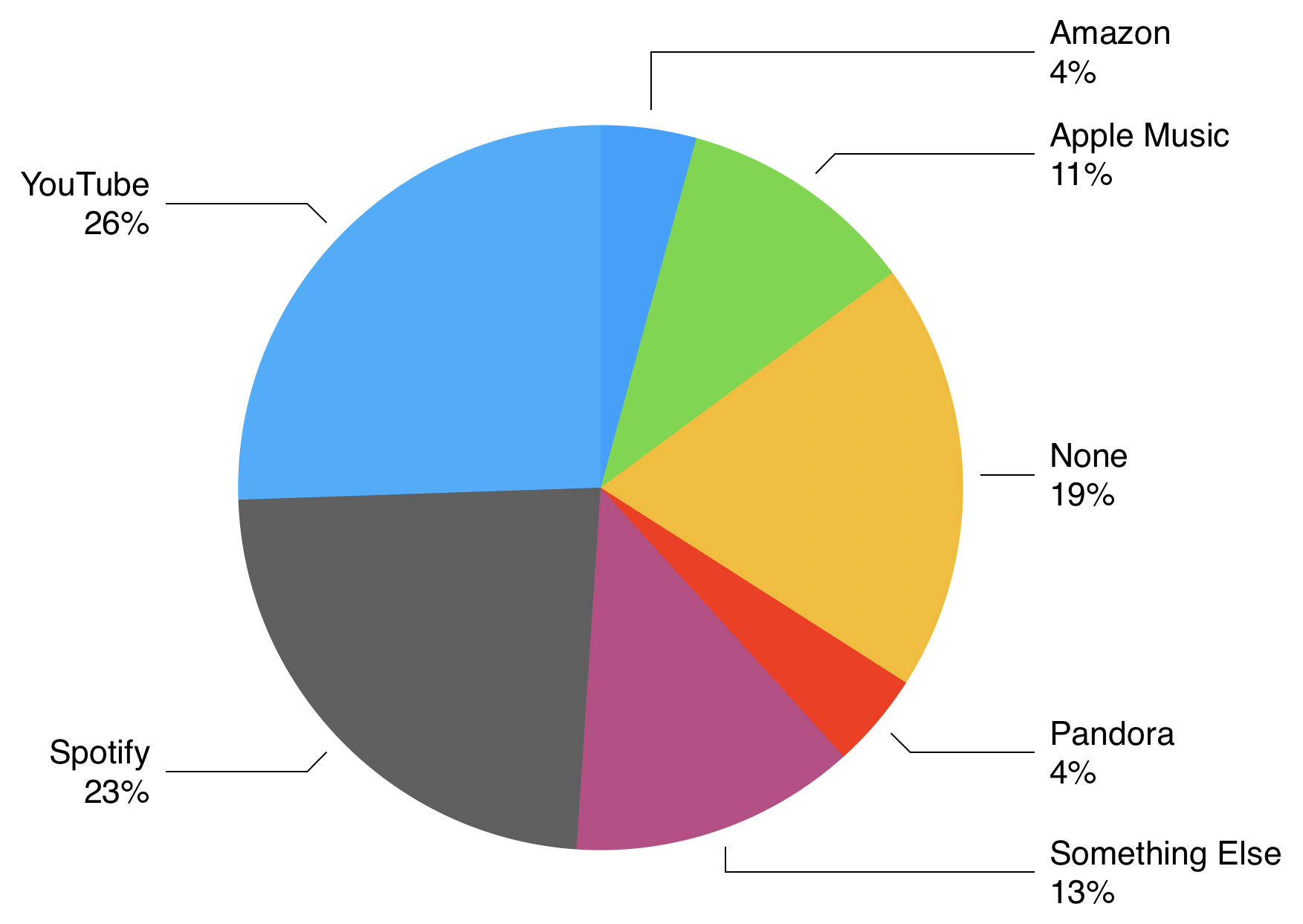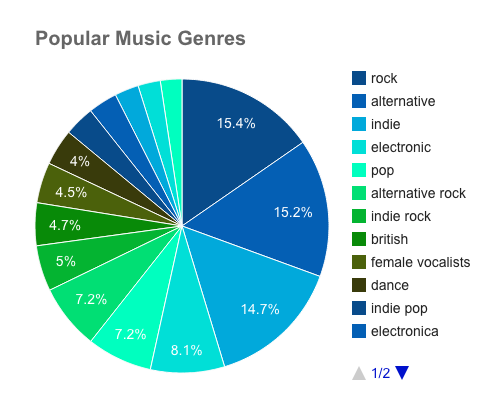Music Pie Charts: A Visual Journey Through Your Listening Habits
A music pie chart is a visual representation of your listening habits, typically focusing on your top artists or genres. It’s a fun and engaging way to understand your musical preferences and share them with others.

How it Works:
- Data Collection: These charts usually rely on data from music streaming services like Spotify. By connecting your account, the tool analyzes your listening history, including play counts, listening time, and the frequency of plays for each artist or genre.
- Chart Creation: The data is then translated into a pie chart. Each slice of the pie represents a different artist or genre, with the size of the slice proportional to their prominence in your listening history. Larger slices indicate artists or genres you listen to more frequently or for longer durations.
- Spotify Wrapped: A Year-End Celebration of Your Listening Journey
Why Music Pie Charts are Popular:
- Visual Appeal: Pie charts provide a clear and concise visual representation of complex data, making it easy to understand your listening habits at a glance.
- Self-Discovery: They can reveal surprising insights into your musical preferences, highlighting artists you may not have consciously realized you listen to frequently.
- Social Sharing: Music pie charts are often shared on social media platforms, sparking conversations and comparisons with friends.
- Personalization: Many tools allow you to customize the appearance of your chart, such as choosing colors and adding personal touches.
Finding Tools to Create Music Pie Charts:
While music streaming services themselves may not offer this feature, several third-party websites and tools can generate personalized pie charts based on your listening data. A quick online search for “music pie chart” or “Spotify pie chart” will likely lead you to a variety of options.
Understanding Your Spotify Receipt:A Guide to Your Music Spending
Important Considerations:
- Data Privacy: Be mindful of the privacy implications when using third-party tools. Always review their privacy policies carefully before connecting your music streaming accounts.
- Data Accuracy: The accuracy of the charts may vary depending on the tool and the data it uses.
Beyond the Visual:
- Discovering New Music: Music pie charts can help you identify underrepresented genres or artists in your listening history, encouraging you to explore new musical avenues and expand your horizons.
- Tracking Evolving Tastes: By creating charts for different time periods, you can track how your musical preferences have evolved over time.
- Unveiling Your Spotify Stats: A Deep Dive into Your Listening Habits
Music pie charts offer a fun and engaging way to explore your listening habits and discover new dimensions to your musical journey.
Music Pie Charts: A Deeper Dive into Your Musical DNA
Music pie charts offer more than just a pretty picture; they provide a unique window into the intricate tapestry of your musical preferences.

Beyond the Surface:
-
Uncovering Hidden Patterns:
- Genre Dominance: A large slice for a specific genre reveals a strong preference for that particular sound.
- Unexpected Discoveries: You might be surprised to find a significant slice for a genre you didn’t consider yourself a major fan of, highlighting previously unnoticed influences.
- Eclectic vs. Niche: The number of slices in the chart can reveal your listening habits. A large number of small slices suggests eclectic tastes, while fewer, larger slices indicate a preference for a smaller number of artists or genres.
-
Personalization & Customization:
- Color Schemes: Many tools allow you to customize the color scheme of the chart, adding a personal touch and making it visually appealing.
- Time Periods: Explore how your pie chart changes over time. Create charts for different periods (e.g., monthly, yearly) to track evolving trends in your listening habits.
- Artist vs. Genre Focus: Some tools allow you to focus on either top artists or dominant genres, providing different perspectives on your musical preferences. wiki
-
Social Interaction & Comparisons:
- Sharing and Discussion: Share your pie chart with friends and family to spark conversations about music, compare tastes, and discover new artists.
- “Musical DNA” Comparisons: Use pie charts to explore the musical DNA of your friends and family members, identifying shared preferences and discovering surprising differences.
-
A Tool for Self-Reflection:
- Understanding Your Tastes: Pie charts can help you better understand your own musical preferences and identify the factors that shape your listening habits.
- Discovering New Artists: By exploring the artists and genres represented in your chart, you can discover new music and expand your musical horizons.
Music pie charts are more than just a visual representation; they are a powerful tool for self-discovery, social interaction, and a deeper understanding of your unique relationship with music.
Disclaimer: This information is based on current knowledge and may be subject to change. The availability and functionality of third-party tools may vary.

